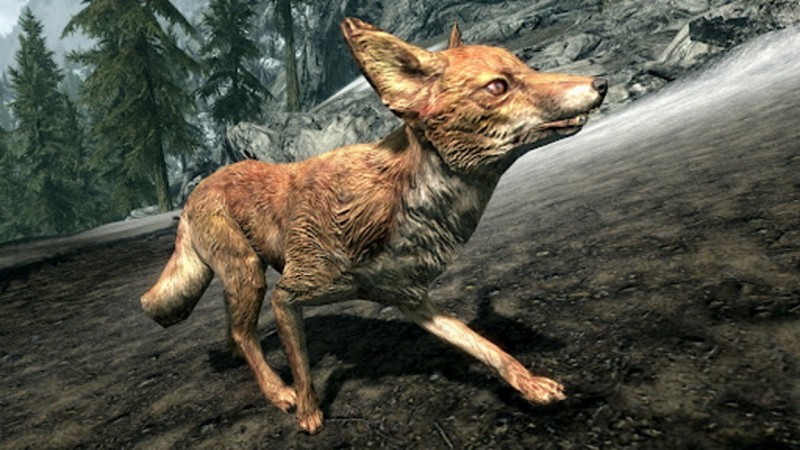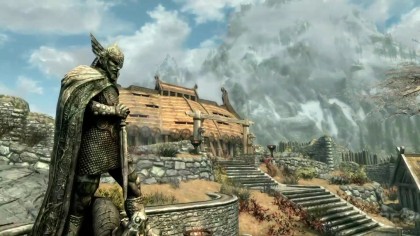One of Skyrim's weirdest, oldest mysteries has been solved
The tale of the treasure fox

All these years after launch and with The Elder Scrolls 6 somewhere on the horizon, Bethesda’s open-world RPG epic Skyrim still has secrets to be solved. One of the most long-standing and contentious mysteries in the game has finally been put to rest – and it centers on a humble fox.
As any Skyrim player will know, the icy tundras of the game world are littered with the sprightly pups, who will run away at the first sight of the Dragonborn hero.
But, over the years, a theory developed that the foxes weren’t running away aimlessly. Instead, some players believed that the foxes were actually guiding them to treasure troves.
As it turns out, that’s actually sort of true – but it's more down to a programming quirk rather than any intentional design decision.
- Starfield hopes and dreams: 5 things we want to see
- Xbox deals: latest offers on consoles, games and accessories
- Best Xbox Series X games: the Xbox games you need to play
Solving the mystery
Developer Joel Burgess, formerly of Skyrim developers Bethesda but now lead at Grindstone-makers Capybara Games, revealed just how the foxes work.
“Skyrim uses something called 'navmesh' for AI navigation,” Burgess revealed in a lengthy Twitter thread.
“For non-dev folks, this is an invisible 3D sheet of polygons that is laid over the world, telling AI where it can and cannot go. In most situations, you're seeing AI decide what do to (run at player, hide in cover, etc), use navmesh to make a path, and navigate along that path.
Sign up for breaking news, reviews, opinion, top tech deals, and more.
“Foxes are no different. But their AI is very simplified: they basically can *only* run away. So foxes flee. Why would they flee towards treasure?

“This is where it gets interesting.
“If you're close to an AI, it's in "High Process", or the most fancy, CPU-intensive pathfinding. It uses the full navmesh and will do things like line of sight and distance checks.
“To contrast, there's also "Low Process" - used for stuff like NPCs walking a trade route across the world. These are only updated every several minutes, and position is tracked very loosely. The bandit stabbing your face, however, is running nav stuff many times per second.
“There is a sort of "Medium Process" for characters nearby, but who didn't need the complex pathing of combat. Because of the way the fox's AI worked (always be fleeing!) it's basically ONLY using this process.
“This is where understanding of how Skyrim uses navmesh comes in.
“Swaths of the outdoor world have simple navmesh. You don't need to add lots of detail in a space with basic topography, little clutter, or a low chance of combat. So wilderness = small number of big triangles.
“When you stumble across something like a camp, however, navmesh gets way more detailed. Added visual detail means added navmesh detail, and if we're placing NPCs of any kind, we also tend to add even more detail.
“So Points of Interest = big number of small triangles. You see where this is going?
“The Fox isn't trying to get 100 meters away - it's trying to get 100 *triangles* away.
“You know where it's easy to find 100 triangles? The camps/ruins/etc that we littered the world with, and filled with treasure to reward your exploration. So foxes aren't leading you to treasure - but the way they behave is leading them to areas that tend to HAVE treasure, because POIs w/loot have other attributes (lots of small navmesh triangles) that the foxes ARE pursuing. To players, however, it's the same thing.”
Analysis: Happy little accidents
Reading through Burgess’s explanation, I’m reminded of the painter Bob Ross – not just his painting’s similarities to Skyrim’s wondrous forestry, but Ross’s love of “happy little accidents”, the misplaced brush-strokes that would become his favorite landscape elements over the course of a piece.
Skyrim’s foxes are similar – the result of countless decisions, lines of code and player behaviours interacting, and the chaos between the structure. It’s not unusual for game developers to purposefully hide easter eggs and secrets in game worlds, but it’s these unexpected moments where massive games like Skyrim really start to feel alive. It’s why we’re still talking about Skyrim ten years after its release, and why players are still discovering Breath of the Wild techniques and secrets with the release of Tears of the Kingdom approaching.
“It's a nerdy little story, but I love it,” wraps up Burgess.
“Emergent Gameplay is often used to describe designed randomness, but this is a case of actual gameplay that NOBODY designed emerging from the bubbling cauldron of overlapping systems.
“And I think that's beautiful.”

Gerald is Editor-in-Chief of Shortlist.com. Previously he was the Executive Editor for TechRadar, taking care of the site's home cinema, gaming, smart home, entertainment and audio output. He loves gaming, but don't expect him to play with you unless your console is hooked up to a 4K HDR screen and a 7.1 surround system. Before TechRadar, Gerald was Editor of Gizmodo UK. He was also the EIC of iMore.com, and is the author of 'Get Technology: Upgrade Your Future', published by Aurum Press.